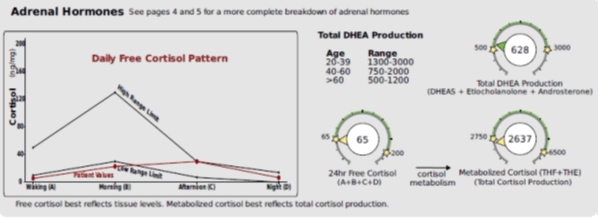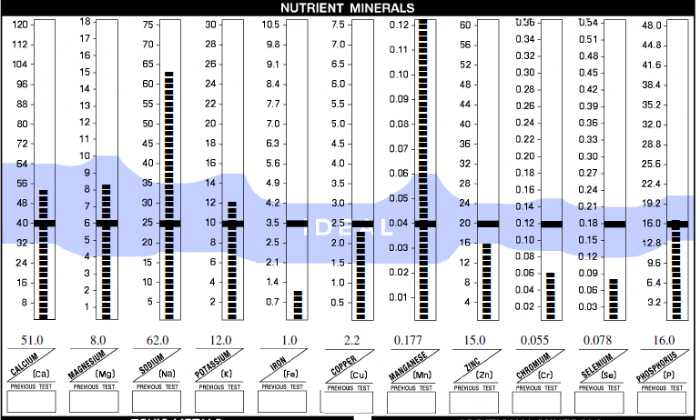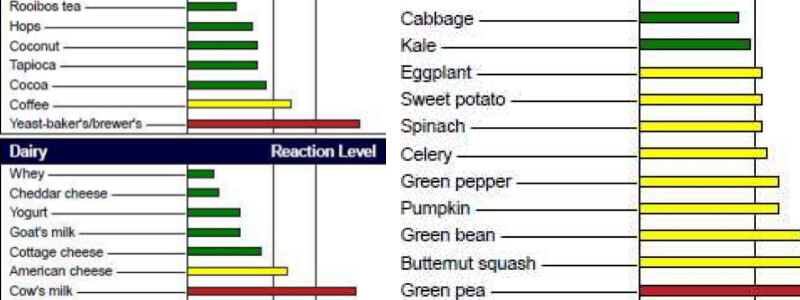If it wasn’t for functional lab testing I really don’t know how my health would be today. I can’t even begin to count the times that I left the doctor’s office fuming after a follow up. I know that I’m not the only one who feels this way. I’m sure that there are plenty of people out there who can relate to my frustration.
Many of my doctor’s visits ended up in my symptoms being downplayed or ignored. This happen too often and I paid the price for it with my health. Conventional medicine only examined the surface of my health problems and didn’t address the actual causes of my illness.
This experience changed my whole outlook on how medicine is practiced. Today, I listen to my body and make decisions based on what I know is best for me. This practice has helped me make better decisions for my health in the long run. It’s my goal to assist you in avoiding the same pitfalls of mainstream medicine and help you regain control of your health.
Antibiotics Wrecked My Gut
Sadly, this lesson came at a cost. One of my problems was recurring UTIs. I was prescribed a number of different antibiotics but none seem to work. The UTIs would come back within a few weeks. My doctor never really offered any other solution. Unfortunately, I didn’t know at the time that there were other options. Some of the other complaints I had were stomach problems, joint pains and feeling exhausted all the time.
At the time I was unaware that I was suffering from a leaky gut and food sensitivities. These problems lead to an overgrowth of gut bacteria, an oxalate toxicity problem and nutrient deficiencies. My body was under a lot of stress which caused my hormones to be out of balances. It was obvious that the antibiotic were doing more harm than good. This motivated me to find a different solution. My search lead me to discover functional lab testing. This was a game changer for me. It was here where I found the answers to why I was feeling the way I was.
Functional lab testing looks at how well your body is functioning by examining blood, urine, hair, or stool samples.
Functional lab testing gives specific insights into what’s going on in your body. Thereby, providing a clear roadmap for targeted treatment for dietary and lifestyle changes. If you’re struggling with chronic health issues, I highly recommend you look into functional lab testing. This might be the key to you feeling better.
My Favorite Functional Lab Tests
DUTCH Panel
This was one of the first test that I ran on myself. The DUTCH panel test looks at your hormone levels and how you are metabolizing them. In addition, it can identify nutrient deficiencies, and problems in the detoxification pathways. This image is part of my DUTCH test report and further below is what was missed by conventional medicine.

DUTCH interpretation:
The wheel on the bottom right shows very little cortisol being made (represented by metabolized cortisol). The left wheel at the bottom shows cortisol is clearing fast (represented by 24hr Free Cortisol). DHEA is low normal meaning I am in a late compensatory phase. In other words, my adrenal glands were on their way to being smoked! This is an adaption to some stressor in my body. High levels of stress will cause the adrenal glands to produce more cortisol. If the levels of cortisol remain high for an extended period of time it can affect other areas of the body. As a protective mechanism the body will attempt to control the amount of cortisol that’s made available.
My complaints:
I felt exhausted all the time. Couldn’t sleep well, and had trouble concentrating or finding the next word to complete a sentence. Motivation was a big problem for me as well.
Conventional testing:
CBC test, tested estrogen levels, comprehensive metabolic panel.
The verdict according to conventional lab tests:
Everything looked normal.
GI Map Test
The GI map test can find microbes in the gut that might be making you sick. It can also identify poor digestion, malabsorption, inflammation, and immune function. If you’ve struggling with gut problems this test may be the key to determining what’s wrong. It sure was a real eye opener for me.
The pathogen section of the report covers H. pylori and its various virulence factors, opportunistic/overgrowth bacteria, parasites, and antibiotic resistance genes. Below is parts of section two and three (H. pylori & opportunistic/overgrowth microbes). It’s worth noting that I took the GI Map test 24 hours before having an endoscopy at the doctor’s office. I wanted to compare the outcome of the two methods for looking into gut health.


GI Map interpretation:
I had an overgrowth of several opportunistic bacteria including h. pylori. This would explain the burning stomach pain and other digestive problems. Other markers identified a deficiency in pancreatic enzymes and a compromised immune system (not included here). This was reassuring as it helped explain some of my long-standing health issues. I was so glad I did this test!
My complaints:
Fluctuating constipation and diarrhea. Burning pain on the lower right side of the stomach. My joints ached all the time and I felt run down. I was not able to digest food properly and often felt nausea after a meal. Food seemed to just sitting in my stomach into the next day. I was not sleeping well and the insomnia was interfering with every part of my life. It was a challenge trying to keep up with societies expectations. I was literally a walking zombie.
Conventional testing:
CBC test, endoscopy with a biopsy.
The verdict according to conventional lab tests:
While I was sitting in the waiting room I chatted with a few of the patients. Some had the same procedure that I did and they were there for their follow up. For the most part, all were diagnosed with gastritis. Then it was my turn. I was informed that all of my blood tests looked normal. Iron was marginally low but not so severe that it’s something to be concern about at this point. Biopsy showed inflammation of the duodenum but no ulcer.
I was diagnosed with gastritis and was prescribed a Proton-pump inhibitor but I didn’t use it. Instead, I followed my own protocol based on the GI Map results. I found it interesting that everyone in the waiting room had gastritis. I couldn’t help wondering if gut bacteria was the culprit of their gastritis. If such is the case then the Proton-pump inhibitor (PPI) will only set the stage for more pathogenic bacteria to flourish.
Organic Acid Test (OAT)
There are 76 markers on the organic acid test. The markers indicate various important pieces of information about the levels of different acids in your urine. The acid levels can identify potential problems with dysbiosis, and an abnormal overgrowth of yeast and bacteria. In addition, mold overgrowth and nutrient deficiencies can also be detected. It can also provide information about overall metabolism including how well your cells are producing energy and eliminating toxins. This test can help uncover the root cause of many common symptoms.
Below is a section on the OAT that analysis oxalate metabolism (glyceric acid, glycolic acid, and oxalic acid).

OAT interpretation:
Glyceric is within normal range but passed the middle point. This indicates that the primary enzyme catalyzing glyoxylate to glycine, the AGT enzyme may not be functioning optimally. Oxalic acid is on the high end. High oxalic acid levels can be caused by a lack of vitamin B6, or foods that are high in oxalates. Bacterial overgrowth can also contribute to high oxalates. The GI Map results confirmed that I was dealing with an overgrowth of opportunistic bacteria. Oxalate toxicity is very likely here.
My complaints:
Bloating, joint pain, constipation, stomach pain, severe acne, brain fog, EMF sensitivity.
Conventional testing:
CBC, comprehensive metabolic panel, abdominal ultrasound.
The verdict according to conventional lab tests:
Blood work inconclusive, prescribed an ointment for the acne, suggested MiraLAX for the constipation, tums for stomach pain.
HTMA Test
The hair tissue mineral analysis test can identify stress patterns in the body. It can also detect early nutritional deficiencies and heavy metal toxicity. The test is non-invasive and only requires a small sample of hair.
My hair mineral analysis shows that I was deficient in iron, zinc, chromium and selenium. It’s not uncommon to have nutrient deficiencies when you are dealing with an overgrowth of opportunistic bacteria. I also had high levels of mercury (not shown here), which can be toxic to the body. I did have amalgam fillings at the time.

HTMA interpretation:
High sodium: As you can see my sodium level is really high which is an indicator of adrenal stress. This supports the results on my DUTCH test that showed I had “Low free cortisol” with “Low metabolized cortisol”.
Low Iron: What’s important here is to look at the ratio between iron and copper. Low iron in relation to copper indicates anemia, while high iron in relation to copper may indicate iron overload. The low iron would explain why I wasn’t sleeping well and felt run down. There is a correlation between iron deficiency and sleep problems. When iron levels are low it can result in a serotonin deficiency which will interfere with restful sleep. The previous blood work done by the primary physician showed marginally low iron blood serum levels. However, based on conventional ranges it was not a major concern.
Manganese: The body needs it for energy production, healthy bones, connective tissue, and normal brain and nerve function. In excess, it becomes toxic to the body. Pathogens like Staphylococcus aureus may utilize manganese to resist our immune system’s attacks.
You may be wondering how this is possible. White blood cells produce certain chemicals in response to the presence of pathogens. That chemical produced by neutrophils is hydrogen peroxide. If there is an overabundance of manganese, neutrophils are unable to generate hydrogen peroxide and destroy bacteria. In this way manganese acts as a shield for this bacteria.
The question here is how did I end up with this bacteria and manganese toxicity. Oxalate toxicity may have something to do with it. Oxalates bind to metals and can cause metal toxicity problems. High manganese would attract s. aureus which was present on my GI Map. Both Manganese and Iron share the same pathway and high manganese is a sign of unregulated iron and unbound copper.
My complaints:
Chronic fatigue, gut issues, bloating, nausea, hair falling, EMF sensitivity, joint pain.
Conventional testing:
None. All avenues exhausted.
The verdict according to conventional lab tests:
There was nothing further they can do or test for. Lab results didn’t reveal anything that they can go on. In order to get insurance approval for further testing they needed to show medical necessity and there was none.
MRT Test
The MRT test is a food sensitivity test that identifies 170 different foods. This includes chemicals or additives that are causing inflammatory reactions in the body. It’s a simple blood test that measures subtle volume changes in mediators from white blood cells. These include lymphocytes, neutrophils, monocytes, and eosinophils. These volume changes in the blood cells indicate whether the lymphocytes are producing more or less of the mediators in response to the food or chemicals.

MRT interpretation:
The results came back showing food sensitivities to certain foods that I thought were safe. Foods marked by the red and yellow bar were foods that I was reacting to. The green foods were the non-reactive foods.
My complaints:
Chronic fatigue, gut issues, bloating, nausea, hair falling, joint pain.
Conventional testing:
None. They never tested me for food sensitivities.
The verdict according to conventional lab tests:
No test done by the doctor but because I have Celiac Disease everything was blamed on my medical diagnose. I used the information from the MRT test and tailored an eating plan for myself. I removed all reactive foods and started to feel better. Over time I was able to introduce some of the foods back into my diet as my gut healed.
Conclusion
Are you starting to get the picture? Had I relied on conventional testing I would still be lost trying to figure out what was wrong with me. My health would have continued to decline. Thankfully, I did functional lab testing and was able to get to the root cause of my health problems. If you are suffering with chronic health problems, I highly recommend functional lab testing. It’s helped me immensely and I’m confident it can help you too.
If you would like to learn more about functional lab testing, book a free 30-minute consultation with me and I’ll be happy to chat with you about it. Click here to book.

